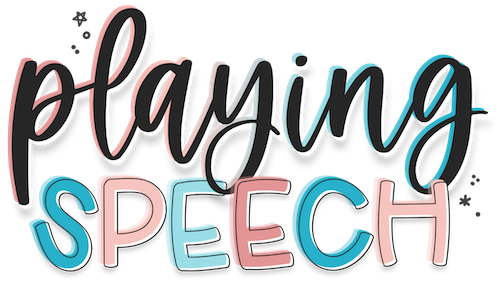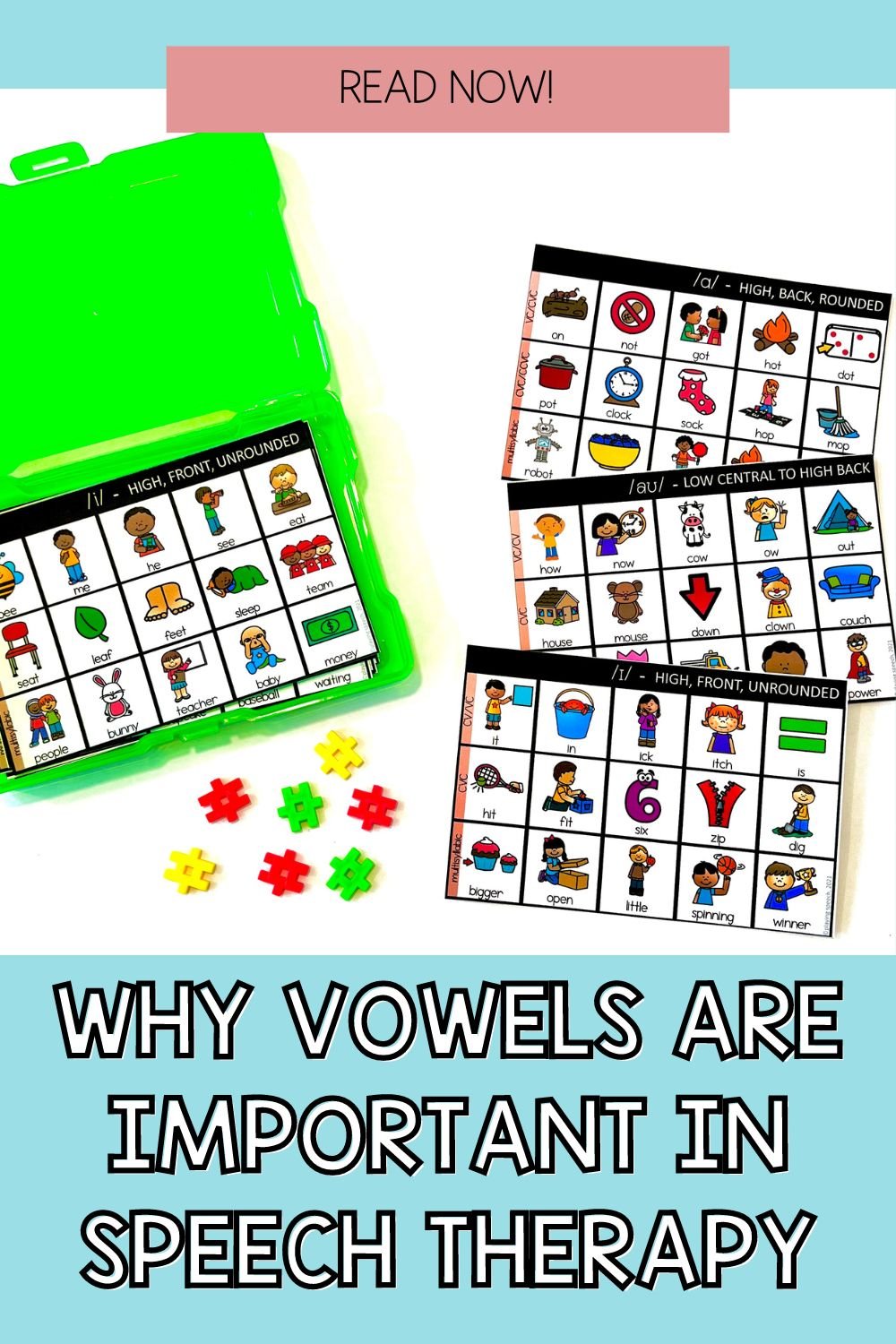Why We Need to Work on Vowels in Speech Therapy
VOWELS IN SPEECH THERAPY
I often work on vowels in speech therapy. I work on them with my early language learners and my children with apraxia of speech or suspected apraxia of speech. Let’s talk about why vowels are so important in speech and different ways we can address vowel errors or distortions.
WHY ARE VOWELS IMPORTANT
Vowels are super important for clear speech. They provide the framework around which words are built. Without vowels, words would be nothing more than a collection of consonants strung together. Every syllable contains a vowel!
Vowels are particularly important because they carry much of the meaning in a word. Let’s look at the word "beat" as an example. If you were to replace the "ea" with an "i," the word would become "bit," and the meaning would be completely different. Similarly, if you were to replace the "a" with an "o," the word would become "boat," and the meaning would again be different!
So, think about the child who demonstrated vowel errors or distortions. They will become very unintelligible and their speech can be difficult to understand. Vowels are crucial to effective communication, and issues with vowel production can have a significant impact on a person's ability to communicate clearly. That’s why it’s so important to target vowels in speech therapy when there are vowel errors!
HOW TO WORK ON VOWELS IN SPEECH THERAPY
Let’s look at how to go about working on vowels in speech therapy.
DO AN ASSESSMENT OF VOWEL PRODUCTION
The first step in working on vowels is to identify which vowel sounds are causing difficulty. Some common vowel errors include substituting one vowel sound for another, such as saying "bed" instead of "bad," or distorting diphthongs (e.g. turning them into monophthongs). Identifying the specific sounds that the child is struggling with gives you a place to start in therapy. I created simple task cards with 13 different vowel sounds in order to get a quick assessment of a child’s vowel production skills. Check it out here.
STIMULATE THE VOWEL SOUNDS
Once you have identified which vowel sounds need to be worked on, you have to try to stimulate a correct vowel production. I like to have the child practice producing the sound by itself or in a simple CV or VC syllable shape. I also like to use sound effects to elicit vowels. This is because sound effects are usually easier to say phonetically. Sound effects are also said in a playful way that draws children’s attention to them, and therefore, makes children more likely to want to imitate them.
You can use the vowels like sound effects all by themselves (e.g. “ee” while sliding down a slide). Or you can use a CV combination sound effect like “wheee” if the child can do that. If you are looking for a resource with lots of different sound effects with varied vowels to get some ideas, click here.
PLEASE NOTE: If a child has apraxia of speech or suspected apraxia of speech, as soon as you can, plug that vowel sound into a functional word. For example, if the child can produce the long “e” sound, try to incorporate it into words like “me” or “be” or “eat” as soon as you can!
USE VISUALS AND FEEDBACK
Visual cues and verbal feedback can be incredibly helpful in working on vowel production in speech therapy. You can use mirrors or the front facing camera on a phone or tablet to allow the child to see themselves as they produce the vowel sound. This can help them to see how to position their articulators. You can focus on how “big” or “small” the mouth should be when making a vowel sound. You can also focus on if the lips should be rounded, retracted, or neutral. Talk about if the vowel sound is made in the front of the back of the mouth. The speech language pathologist can give verbal feedback like “I saw you use a small mouth for that sound. We need to use a bigger mouth” or “Nice making round lips for that sound” to help the child improve their vowel production.
PRACTICE IN CONTEXT AND USE MINIMAL PAIRS
Once the child is getting good at producing vowel sounds in isolation and/or in sound effects, you can begin to work on incorporating them into words and phrases. This could be drilling one vowel sound in words of increasing complexity. This could also include practicing vowel sounds in minimal pairs words, such as "bat," "bet," and "but." You can also have the child practice using correct vowel sounds in short, functional phrases or sentences. For example, if a child is working on the diphthong long “a” sound (as in “day”), you could practice a phrase like “Let’s play.”
LET’S WRAP IT UP
Vowels are super important for clear speech. To target vowels in speech therapy, first begin with a good assessment of the vowel production. Next stimulate the correct vowel production using multisensory cueing. And finally, try to incorporate those new vowel sounds into words ASAP. If you need a handy, fast look at all the vowels, check out these mini task cards here. And shoot me a message if you have any questions!



